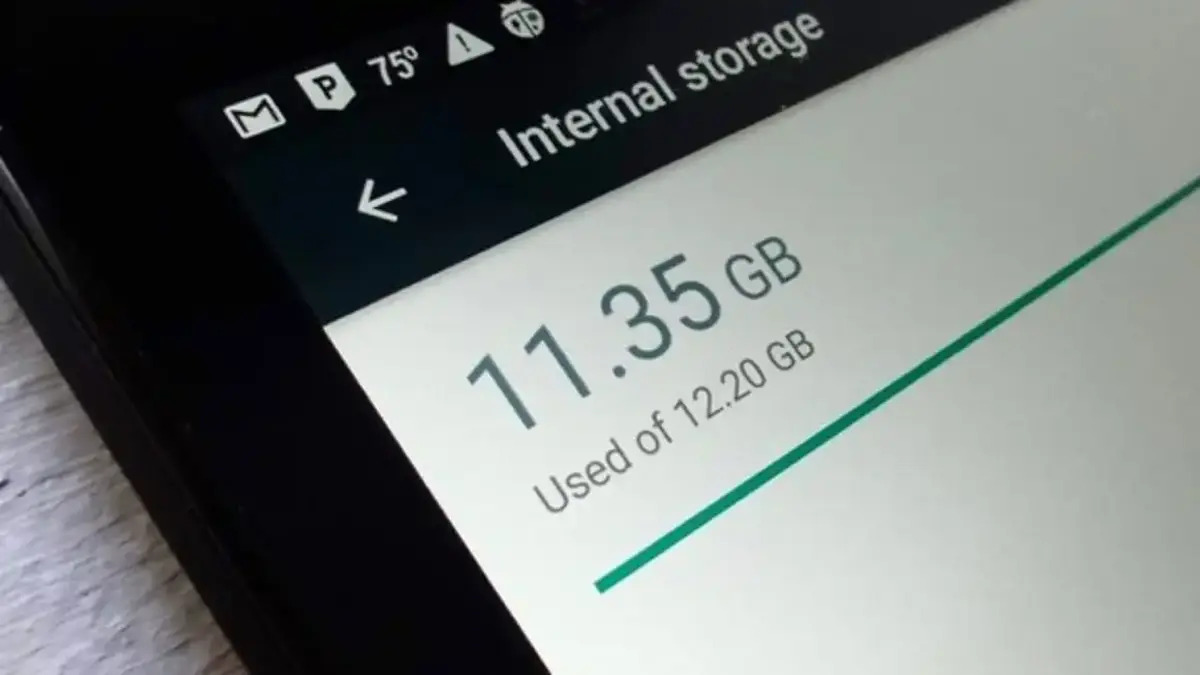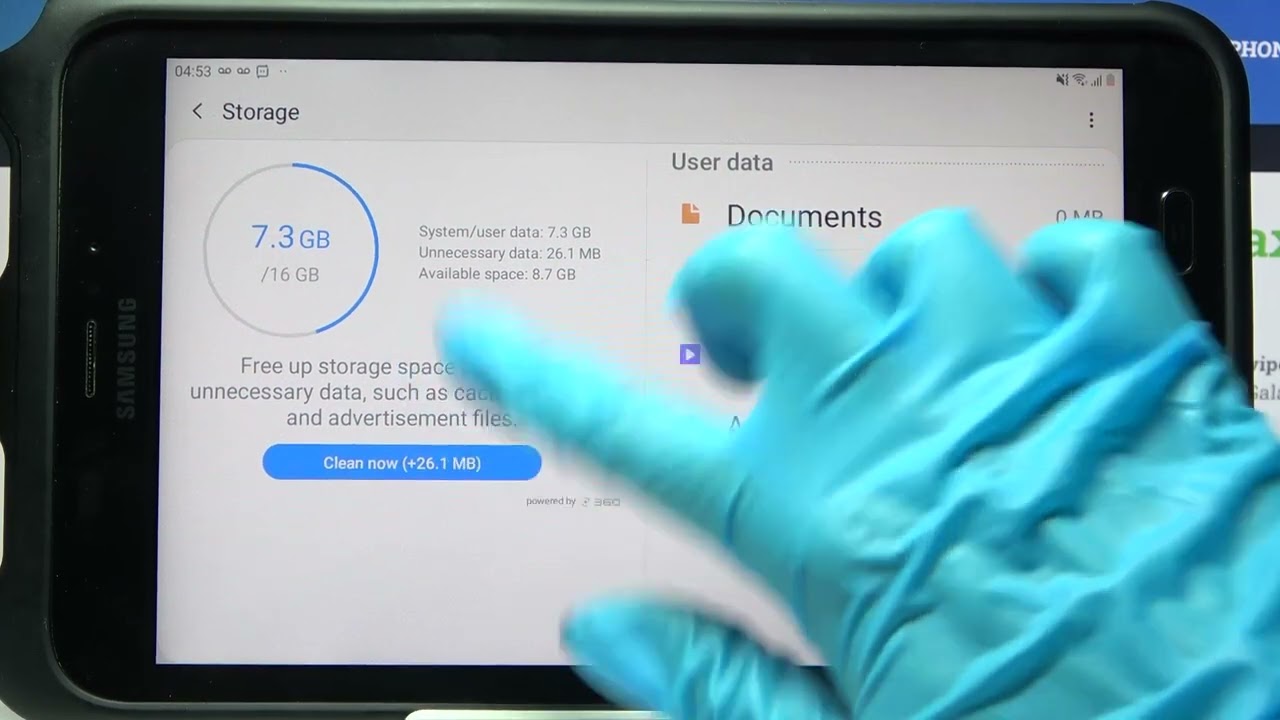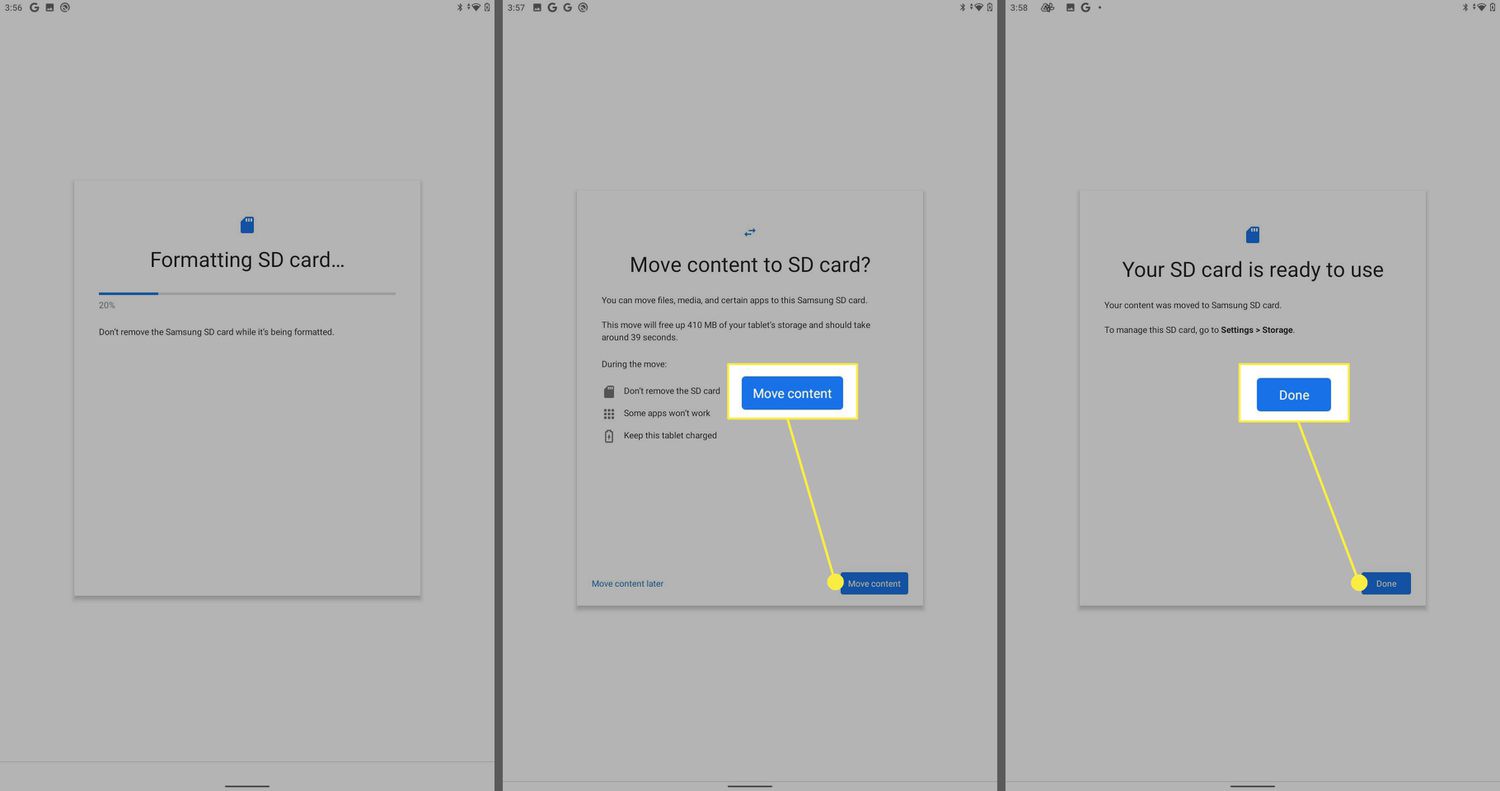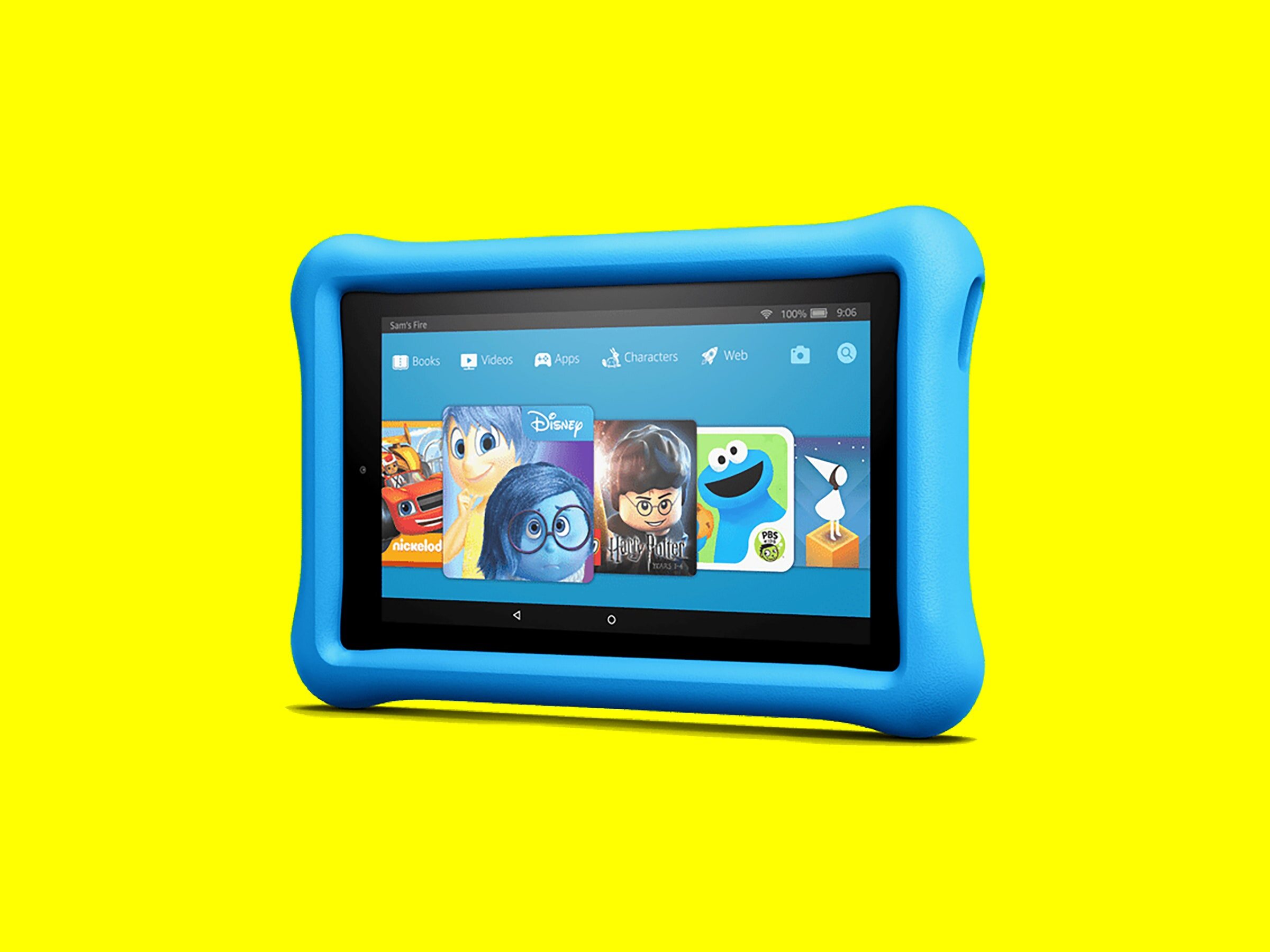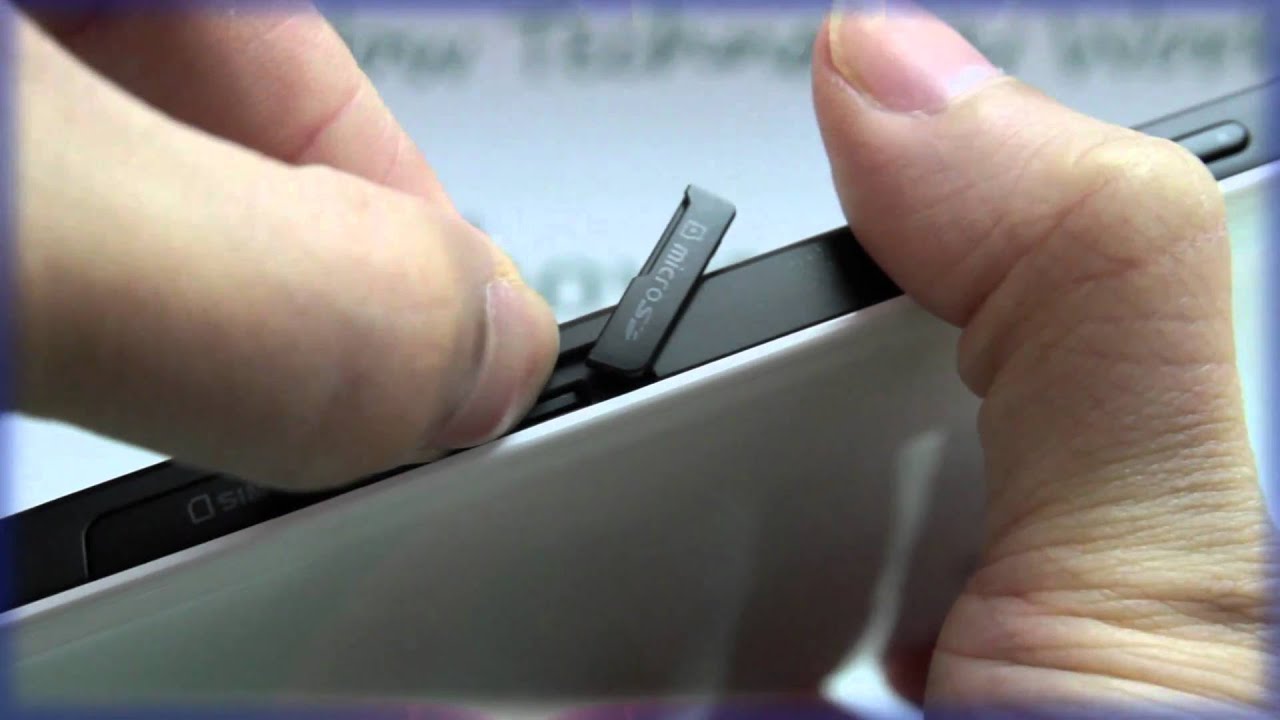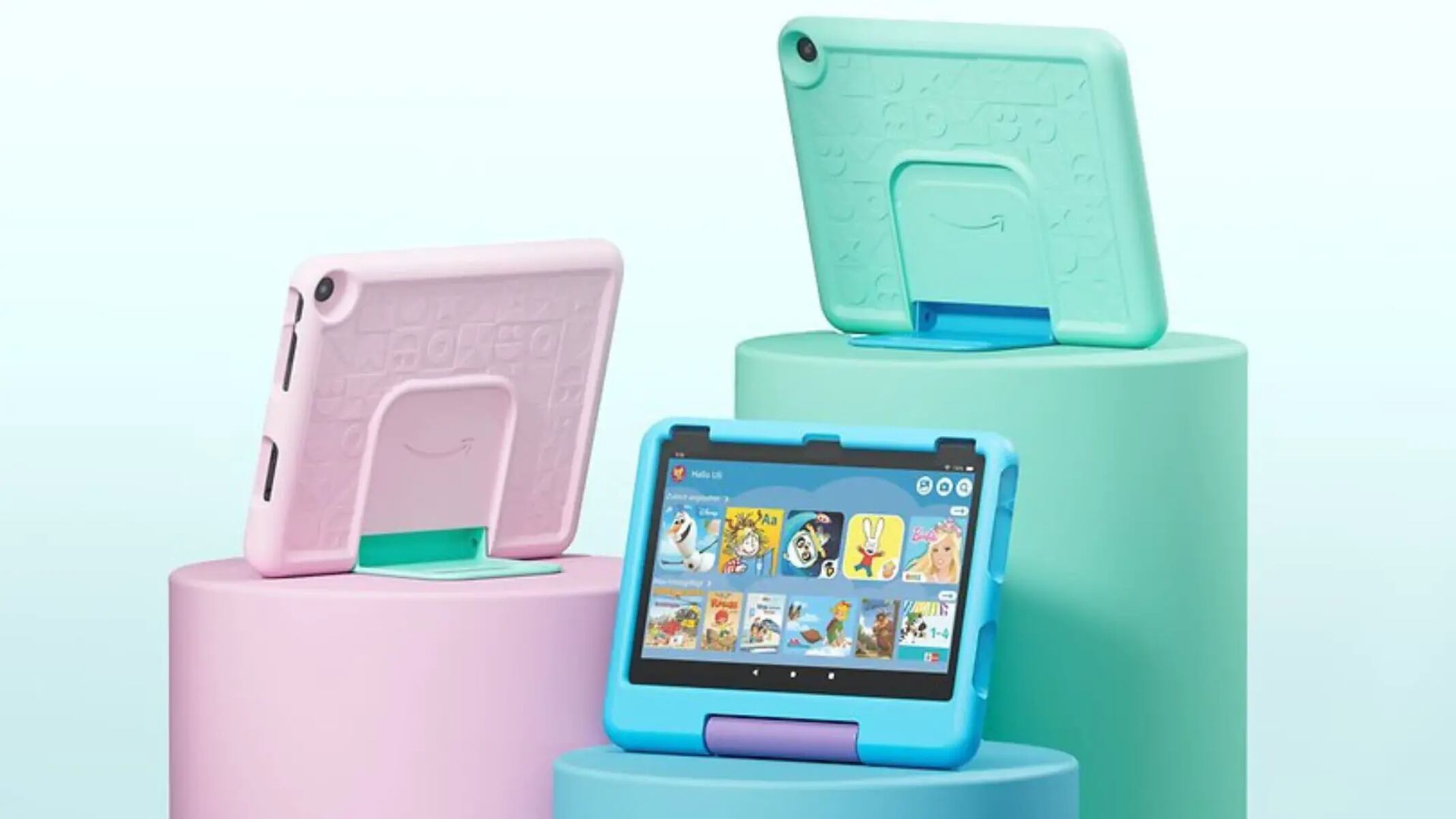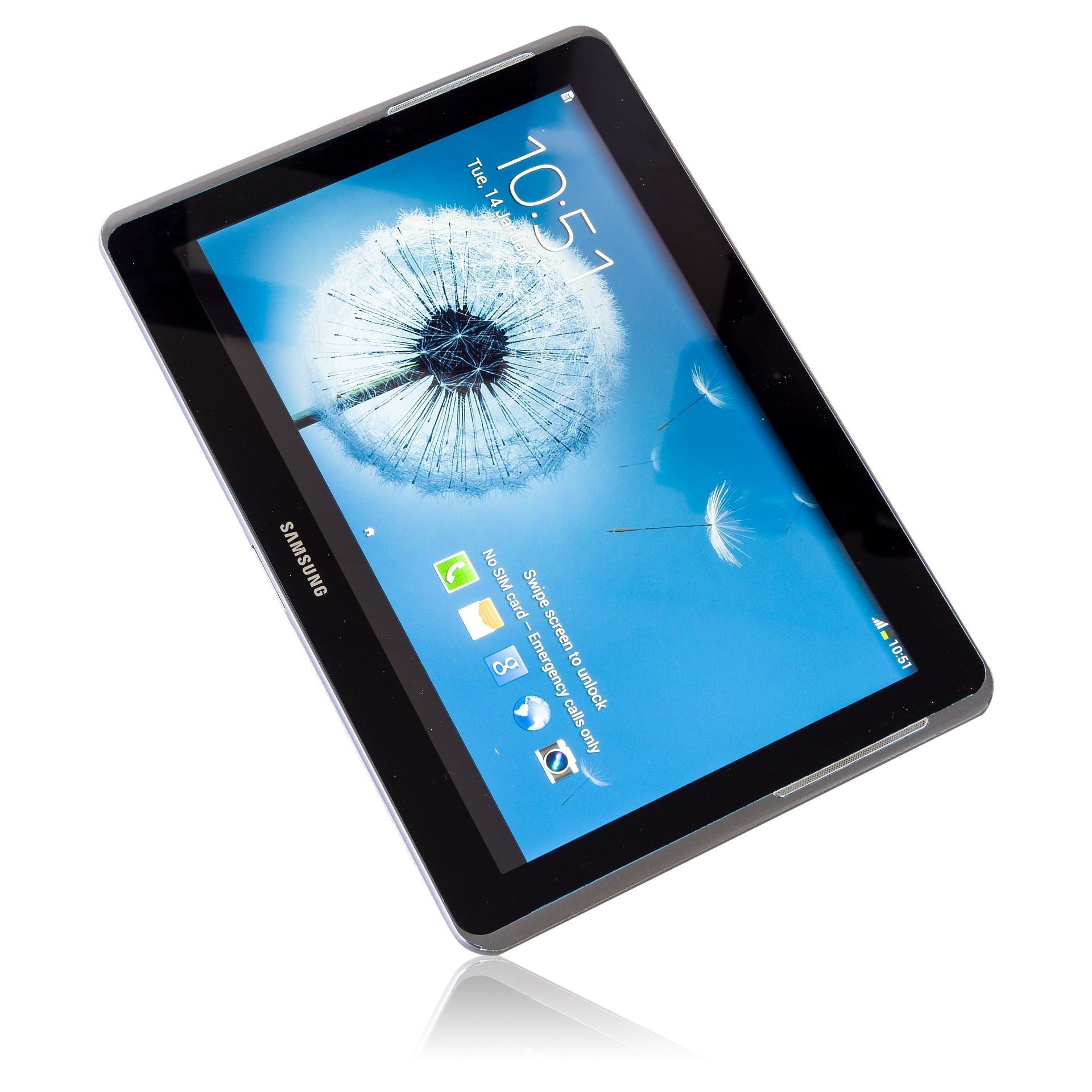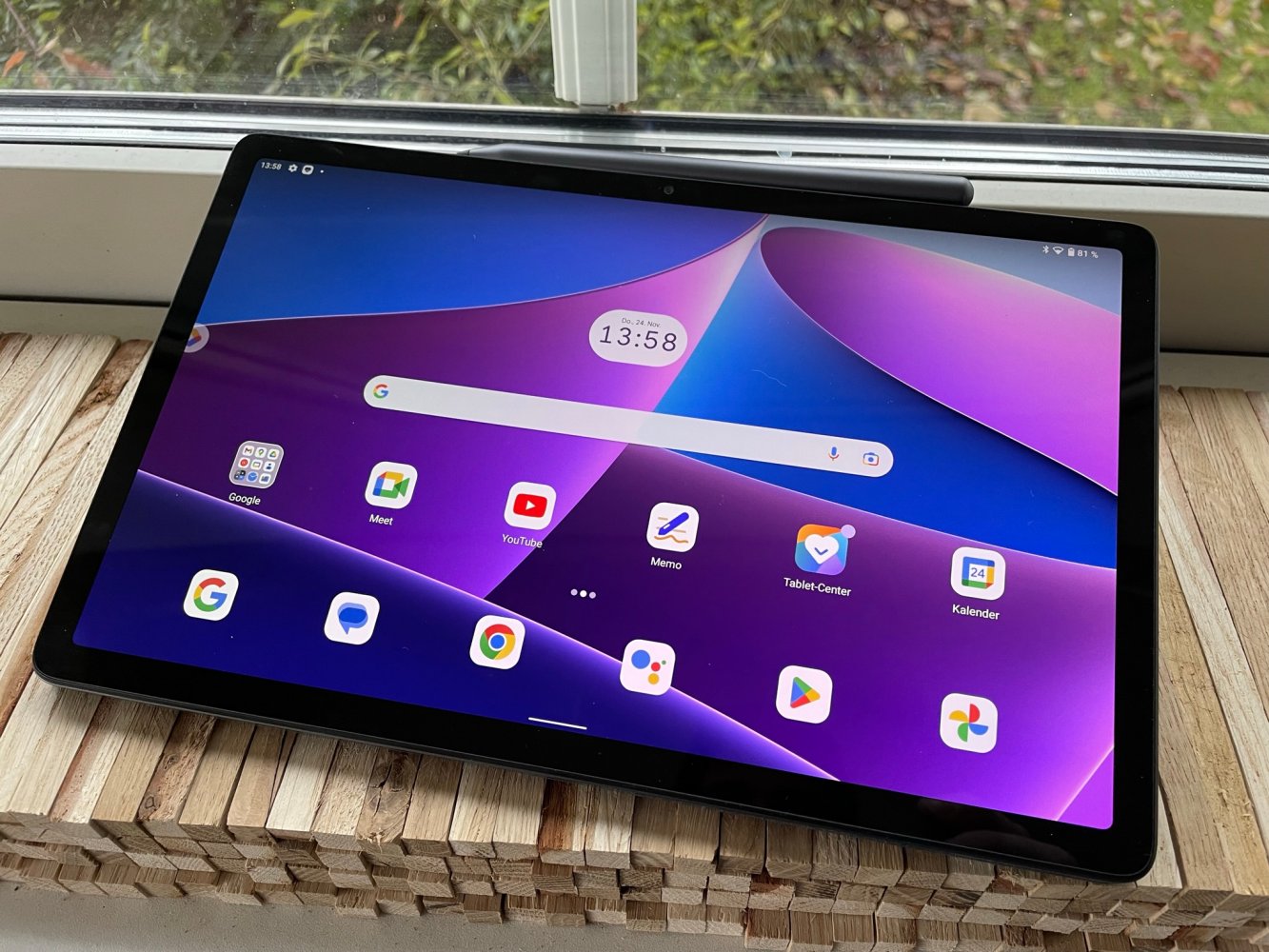Introduction
Welcome to the world of tablets, where portability and convenience collide! Tablets have become an integral part of our lives, serving as our go-to devices for entertainment, communication, and productivity. However, just like any other electronic device, tablets have limited storage capacity, and sooner or later, you may find yourself struggling with a lack of available space.
Running out of storage on your tablet can be frustrating, as it can limit your ability to download new apps, save photos and videos, and even slow down the overall performance of your device. But don’t worry, there are several simple steps you can take to free up storage and optimize your tablet for better use.
In this article, we will explore various methods to help you regain precious space on your tablet. Whether you’re using an Android tablet, an iPad, or any other device, these tips and tricks will pave the way for a smoother and less cluttered digital experience.
Now, let’s dive into the world of storage optimization and unleash the full potential of your tablet!
Why is storage important on a tablet?
Storage plays a crucial role in the performance and functionality of your tablet. Here are a few key reasons why managing your tablet’s storage is essential:
1. App installation: Apps are a vital part of any tablet experience. From social media platforms to productivity tools, we rely on apps for various purposes. However, every app occupies a certain amount of storage space. As your collection of apps grows, they gradually consume more and more storage, making it necessary to regularly free up space for new installations.
2. Media storage: Tablets have become media powerhouses, capable of storing and playing high-definition videos, photos, music, and more. These files can quickly eat up storage capacity, especially if you’re fond of capturing and storing numerous photos and videos. Limited storage can hinder your ability to capture new memories or enjoy media content to its fullest.
3. System performance: Insufficient storage on your tablet can slow down its overall performance. When storage space is running low, it affects not only app installation but also the ability of the system to run smoothly. Inadequate storage can lead to lag, crashes, and freezing, making it essential to maintain an optimal storage capacity for a seamless user experience.
4. Updates and backups: Operating system updates and app updates often require a certain amount of available storage space. If your tablet’s storage is already full, you may encounter difficulties when trying to update software or perform backups. Regularly freeing up space ensures you can stay up to date with the latest features and security improvements.
5. Future-proofing: Investing in ample storage capacity can future-proof your tablet, allowing you to adapt to evolving needs and requirements. As technology advances and apps become more resource-intensive, having adequate storage ensures that your tablet remains capable of handling future updates and installations.
Understanding the importance of storage on your tablet is the first step toward optimizing its performance and maximizing its potential. By managing your tablet’s storage effectively, you can enjoy a smooth and hassle-free user experience, with ample space for apps, media, and system functionality.
Check your storage space
Before you embark on a mission to free up storage on your tablet, it’s essential to assess how much space you have available and identify what is taking up the most room. Here’s how you can check your tablet’s storage space:
1. Settings: Open the settings on your tablet and look for the “Storage” or “Device Storage” option. This will provide you with a breakdown of the used and available storage on your device. It may also categorize the storage usage by apps, photos, videos, and other types of files. Take note of the areas where you have the most significant storage consumption.
2. Storage analyzer apps: If your tablet doesn’t have a built-in storage analysis feature, you can download third-party storage analyzer apps from your device’s app store. These apps provide detailed insights into your storage usage, helping you identify large files, unnecessary duplicates, and wasted space. They often offer additional features like junk file cleaning and optimization suggestions.
3. File managers: Some file manager apps also equipped with storage analysis capabilities. If you already have a file manager installed, check if it includes a storage analysis feature. It will give you an overview of the files and folders taking up the most space on your tablet.
Once you have a clear picture of your storage consumption, you can proceed to declutter and optimize your tablet accordingly. Identifying the culprits behind your storage woes will guide you toward the most effective solutions to free up space and enhance your tablet’s performance.
Delete unnecessary apps
Over time, it’s common for us to accumulate a collection of apps on our tablets, many of which we may no longer use. These unused apps take up valuable storage space and may even run background processes that can drain battery life and slow down your tablet. Here’s how you can get rid of unnecessary apps:
1. Assess app usage: Take a closer look at the apps installed on your tablet and evaluate how frequently you use them. Identify the apps that you haven’t opened in months or those that serve duplicative functions. These are the candidates for deletion.
2. Uninstall unused apps: To uninstall apps on an Android tablet, go to “Settings” > “Apps” or “Application Manager.” Tap on the app you want to remove and select the “Uninstall” option. On an iOS device, press and hold the app icon until it starts to jiggle, then tap the “x” icon to delete. Confirm the deletion when prompted.
3. Disable pre-installed apps: Some pre-installed apps, also known as bloatware, cannot be uninstalled, but you can disable them to prevent them from running actively on your tablet. This step is especially helpful if you find that pre-installed apps are occupying a significant amount of storage space. Navigate to the app settings and look for the “Disable” or “Turn off” option.
4. Clear app data and cache: In addition to uninstalling unnecessary apps, you can also free up storage by clearing the data and cache of apps you intend to keep. This will remove temporary files and data that apps accumulate over time. Head to “Settings” > “Apps” or “Application Manager,” choose the app, and select the “Clear data” or “Clear cache” option.
5. Organize folders: To better manage the apps you use regularly, consider organizing them into folders. Grouping apps by category (e.g., Social Media, Productivity, Games) can help declutter your home screen and make it easier to find the apps you need. Simply press and hold an app icon, then drag it onto another app to create a folder.
By deleting unnecessary apps and disabling or clearing data for others, you can reclaim valuable storage space on your tablet. This will not only declutter your device but also improve its overall performance and responsiveness.
Clear app caches
App caches are temporary files stored by apps to enhance their performance and provide a smoother user experience. However, these cached files can accumulate over time and consume a significant amount of storage space on your tablet. Clearing app caches can help free up storage without compromising your app’s functionality. Follow these steps to clear app caches:
1. Android devices:
- Go to “Settings” on your tablet.
- Select “Apps” or “Application Manager” (the wording may vary depending on the device).
- Swipe left or right to access the “All” tab or “Installed Apps” tab.
- Tap on the app you want to clear the cache for.
- Choose the “Storage” or “Storage & cache” option.
- Select the “Clear cache” button.
2. iOS devices:
- Go to the “Settings” app on your iPad or iPhone.
- Scroll down and tap on “General.”
- Select “iPad Storage” or “iPhone Storage.”
- Wait for the list of apps to load.
- Tap on the app you want to clear the cache for.
- Choose the “Offload App” option. This will remove the app but keep its documents and data. Alternatively, you can select “Delete App” to remove the app completely.
Clearing app caches can help improve app performance, reduce storage usage, and resolve issues related to app crashes or slow loading times. However, keep in mind that clearing the cache will remove any temporary data stored by the app, such as login credentials or recent settings. You may need to log in again or reconfigure certain app settings after clearing the cache.
Regularly clearing app caches not only frees up valuable storage space but also ensures that your apps are running efficiently, enhancing the overall performance and responsiveness of your tablet.
Move files to the cloud
With the increasing popularity of cloud storage services, you no longer have to rely solely on the limited storage capacity of your tablet. Moving files to the cloud not only helps free up storage but also provides convenient access to your files from multiple devices. Follow these steps to move files to the cloud:
1. Choose a cloud storage service: There are several cloud storage providers available, each offering different storage plans and features. Popular options include Google Drive, Dropbox, OneDrive, and iCloud. Consider your storage needs and preferences before selecting a cloud storage service.
2. Install the cloud storage app: Download and install the app for your chosen cloud storage service from the app store on your tablet. Sign in or create a new account if you don’t have one already.
3. Upload files to the cloud: Open the cloud storage app and navigate to the “Upload” or “Add” button. Depending on the app, you can either select specific files and folders or choose to upload entire folders at once. Follow the on-screen instructions to complete the upload process.
4. Organize files in the cloud: Once your files are in the cloud, you can organize them into folders, just like you would on your tablet. Create folders for different categories or projects to keep your files neatly organized and easily accessible.
5. Remove local copies: After successfully uploading your files to the cloud, you can now delete the local copies from your tablet. This can be done through the file manager or storage settings on your device. Be cautious when deleting files and ensure you have backed up any important data before doing so.
By utilizing cloud storage services, you can effectively offload files from your tablet’s storage, creating space for other essential content. Plus, you can access your files from any device with an internet connection, ensuring that you have your documents, photos, and media available whenever you need them.
Note that cloud storage services typically offer a certain amount of free storage and additional paid plans for those requiring more space. Consider your storage needs and choose the appropriate plan to accommodate your files.
Delete downloaded files or documents
As we use our tablets for various purposes, such as browsing the internet, downloading files, and working on documents, these activities can quickly fill up the device’s storage. Deleting unnecessary downloaded files or documents is an effective way to reclaim precious space. Here’s how you can do it:
1. File manager: Open the file manager app on your tablet. This app may be pre-installed or can be downloaded from the app store. Navigate to the folder where downloaded files are saved. Look for files that you no longer need, such as old documents, images, or videos.
2. Sort files by date: To identify older files, sort them by date modified or created. This will help you find files that have been lingering on your tablet for a long time. Remove any files that are no longer relevant or needed.
3. Downloads folder: The “Downloads” folder is a common location where downloaded files are saved. Open this folder and review its contents. Delete any files that you no longer require. Be cautious, as some files may be important, such as installation files or documents currently in use.
4. Clear browser downloads: If you frequently download files using a browser on your tablet, clearing the browser’s download history can help free up space. Open your browser’s settings and look for the option to clear browsing data or history. Ensure that the “Downloads” or “Download history” option is selected before proceeding.
5. Cloud storage synchronization: If you use cloud storage services like Google Drive or Dropbox, ensure that your downloaded files are synced with the cloud. You can move or copy the files to the cloud storage and then delete them from your tablet. This way, you will have access to the files whenever needed, without occupying local storage space.
Regularly deleting unnecessary downloaded files and documents not only frees up storage space but also helps keep your tablet organized and clutter-free. By curating your downloaded files, you can ensure that your tablet’s storage is optimized for items that are truly important and relevant.
Disable or delete unused accounts
We often create accounts on various websites and apps, but over time, we may find ourselves no longer using or needing them. These dormant accounts not only pose a cybersecurity risk but may also be linked to unnecessary notifications, wasting storage space and bandwidth. Here’s how you can disable or delete unused accounts on your tablet:
1. Identify unused accounts: Take some time to go through your tablet and identify the accounts you no longer use. This could include social media accounts, email accounts, online shopping accounts, or any other service you signed up for but no longer actively engage with.
2. Disable accounts: Some services allow you to temporarily disable your account instead of deleting it permanently. This is a useful option if you think you may want to reactivate the account in the future. Visit the account settings or preferences within the specific app or website and look for the option to disable or deactivate the account.
3. Delete accounts: For accounts that you’re certain you no longer want or need, deleting them entirely can be a better option. Check the account settings or privacy options within the app or website to find instructions on how to delete your account. Follow the provided steps, which may involve confirming your decision and providing additional information.
4. Unsubscribe from emails: If you have email accounts linked to your tablet that you no longer use, take the time to unsubscribe from newsletters, promotional emails, and notifications. This reduces clutter in your inbox and prevents unnecessary storage consumption.
5. Update saved passwords: As you disable or delete unused accounts, remember to update your saved passwords on your tablet’s password manager or in your browser’s saved passwords. This ensures that you’re not storing outdated information and helps keep your information secure.
By disabling or deleting unused accounts, you not only reduce clutter and storage consumption on your tablet but also minimize the risk of a potential security breach. It’s a good practice to regularly review your accounts and keep your tablet streamlined with only the accounts that are actively used and necessary for your digital life.
Remove offline files from streaming apps
Streaming apps have revolutionized the way we enjoy media on our tablets, allowing us to access a vast library of movies, TV shows, and music. However, these apps often offer the option to download content for offline viewing, which can take up a significant amount of storage space. If you no longer need these offline files, removing them can help free up storage. Follow these steps to remove offline files from streaming apps:
1. Open the streaming app: Launch the streaming app on your tablet. Examples include Netflix, Spotify, Amazon Prime Video, or Disney+.
2. Access downloaded or offline content: Look for a section within the app that displays your downloaded or offline content. In most apps, this can be found in the “Downloads,” “My Downloads,” or “Offline” tab.
3. Review downloaded files: Browse through the list of downloaded files and identify the ones you no longer need. This could include movies or TV show episodes you have watched or music albums you have already listened to.
4. Delete downloaded files: On each file or title, you should find an option to delete or remove the downloaded content. Select the appropriate option to remove the file from your tablet’s storage. Some apps may offer batch selection or the ability to delete all downloaded content at once.
5. Manage download settings: To prevent unnecessary offline downloads in the future, review the download settings within the streaming app. Some apps allow you to limit the number of downloads or specify certain quality settings for downloading content. Adjust these settings to ensure that only essential content is being downloaded and stored on your tablet.
Removing offline files from streaming apps not only frees up storage space but also keeps your tablet more organized. It’s a good practice to regularly review your downloaded content and delete items that you have finished watching or listening to.
Remember that deleting offline files does not affect your streaming service’s subscription or access to online content. You can always stream the content again if needed, and removing downloaded files will not impact your ability to enjoy the streaming service’s library.
Delete old messages and call logs
The messaging and calling features of our tablets are convenient for keeping in touch with friends, family, and colleagues. However, these conversations and call logs can accumulate over time, taking up valuable storage space on your device. Deleting old messages and call logs not only helps free up storage but also enhances privacy and declutters your tablet. Follow these steps to delete old messages and call logs:
1. Messages:
- Open your messaging app on your tablet.
- Navigate to the specific conversation or thread that contains old messages you want to delete.
- Long-press on a message to select it, then continue selecting additional messages you want to delete.
- Look for a trash bin or delete icon and tap on it to remove the selected messages. Some apps may have options to “Delete all” or “Clear conversation” to delete the entire thread.
- Repeat this process for other conversations with old messages that you want to delete.
2. Call logs:
- Open the phone or dialer app on your tablet.
- Look for the “Call History,” “Recents,” or “Logs” tab that displays your call history.
- Swipe left or right on each call to reveal options such as “Delete” or “Remove.”
- Tap on the appropriate option to delete individual calls, or look for a “Clear Call History” or “Delete All” option to remove the entire call log.
Deleting old messages and call logs not only frees up storage but also helps maintain your privacy by removing potentially sensitive information from your tablet. It’s a good practice to regularly review and delete conversations and call logs that are no longer relevant or necessary.
Remember that deleting messages and call logs is irreversible, so make sure to double-check before removing any important conversations or call history. It’s wise to back up important messages or call logs before deleting them to ensure you don’t lose any valuable information.
Reset or restore your tablet
If you’ve tried various methods to free up storage on your tablet but are still struggling with limited space, performing a reset or restore can be a viable solution. Resetting or restoring your tablet can help you start fresh, erase unnecessary data, and reclaim significant amounts of storage. Here’s how you can reset or restore your tablet:
1. Backup your data:
Before resetting or restoring your tablet, it’s crucial to back up any important data that you want to keep. This includes photos, videos, documents, contacts, and any other files you want to preserve. You can back up your data using cloud storage services, connecting to a computer, or using built-in backup features on your tablet’s operating system.
2. Reset or restore options:
The specific method for resetting or restoring your tablet can vary depending on the manufacturer and operating system. Here are some general guidelines:
- Factory reset: The factory reset option erases all data and returns your tablet to its original factory settings. To perform a factory reset, go to your tablet’s settings, locate the “Backup & Reset” or “System” section, and select the “Factory Reset” or “Reset” option. Follow the on-screen instructions to initiate the reset process.
- Software restore: Some tablets provide a software restore option that reinstalls the operating system while preserving personal data. This can be found in the “Update & Security” or “Software Update” section of your tablet’s settings. Select the “Restore” or “Reinstall” option, and your tablet will guide you through the process of restoring the software to its original state.
3. Set up your tablet:
After resetting or restoring your tablet, you will need to go through the initial setup process. This typically involves connecting to a Wi-Fi network, signing in to your Google or Apple account, and configuring preferences and settings. You can then restore your backed-up data to your tablet, ensuring that your important files are retained.
Performing a reset or restore on your tablet can help resolve storage issues, improve performance, and give you a fresh start with your device. However, keep in mind that resetting or restoring will erase all personal data and settings, so it’s crucial to back up and save anything you want to keep before proceeding.
Remember to research the specific instructions provided by your tablet’s manufacturer or consult the user manual for the most accurate and detailed guidance on resetting or restoring your particular device.
Conclusion
Managing storage on your tablet is essential for optimal performance and functionality. Whether you’re struggling with limited space or simply want to declutter your device, the strategies outlined in this article can help you free up storage and improve your tablet experience.
By regularly checking your storage space and deleting unnecessary apps, clearing app caches, and removing offline files, you can reclaim valuable storage and ensure that your tablet operates smoothly. Additionally, moving files to the cloud, deleting old messages and call logs, and considering a reset or restore can further optimize your tablet’s storage capacity.
Remember to approach storage management with a careful balance, considering both the practical need for space and the importance of preserving essential data. Always back up important files before making significant changes to your tablet and exercise caution when deleting or resetting your device.
By following these tips and incorporating them into your tablet usage habits, you can effectively manage and maximize storage on your tablet, creating a streamlined and enjoyable digital experience.







